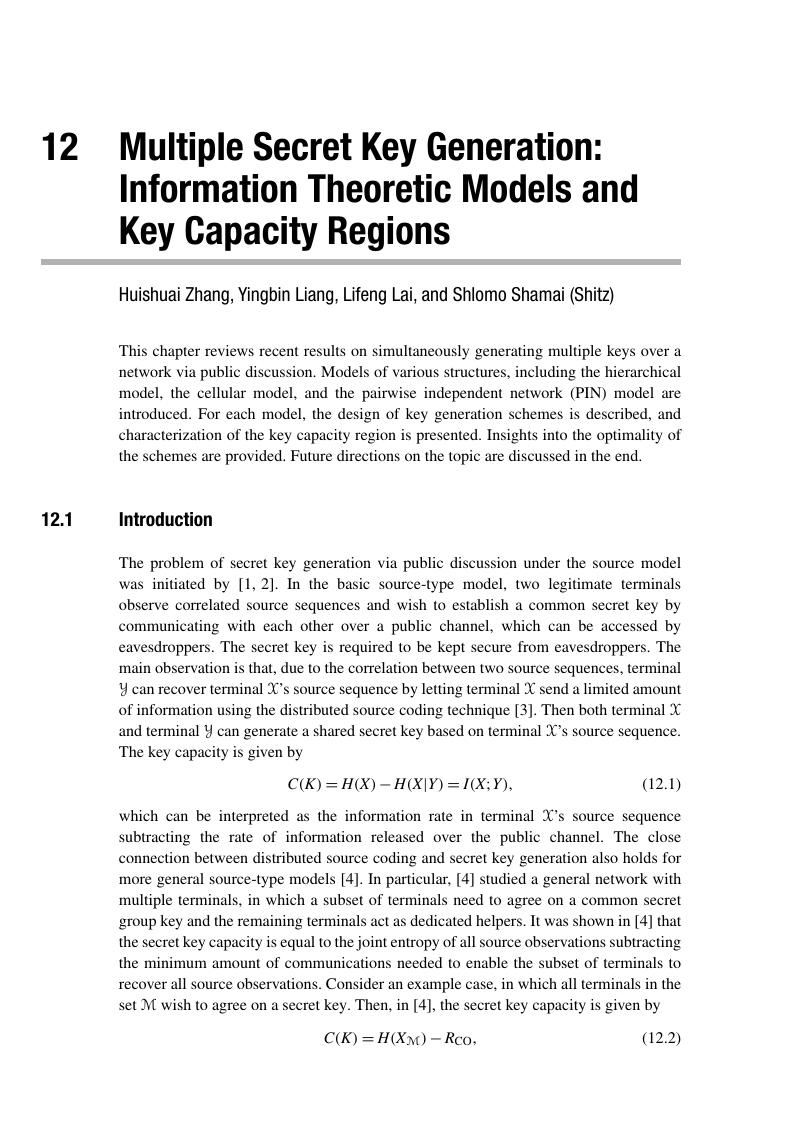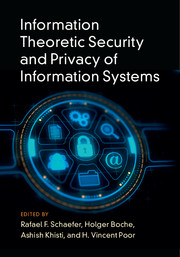Book contents
- Frontmatter
- Contents
- List of Contributors
- Preface
- Part I Theoretical Foundations
- Part II Secure Communication
- Part III Secret Key Generation and Authentication
- 12 Multiple Secret Key Generation: Information Theoretic Models and Key Capacity Regions
- 13 Secret Key Generation for Physical Unclonable Functions
- 14 Wireless Physical-Layer Authentication for the Internet of Things
- Part IV Data Systems and Related Applications
- Index
- References
12 - Multiple Secret Key Generation: Information Theoretic Models and Key Capacity Regions
from Part III - Secret Key Generation and Authentication
Published online by Cambridge University Press: 28 June 2017
- Frontmatter
- Contents
- List of Contributors
- Preface
- Part I Theoretical Foundations
- Part II Secure Communication
- Part III Secret Key Generation and Authentication
- 12 Multiple Secret Key Generation: Information Theoretic Models and Key Capacity Regions
- 13 Secret Key Generation for Physical Unclonable Functions
- 14 Wireless Physical-Layer Authentication for the Internet of Things
- Part IV Data Systems and Related Applications
- Index
- References
Summary

- Type
- Chapter
- Information
- Publisher: Cambridge University PressPrint publication year: 2017
References
- 2
- Cited by

